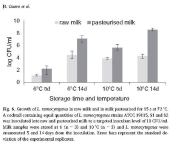Hi Carl,
I am an enthusiastic cook and am excited to see what you have to share with us.
My question is: What would you say are the 3 or 4 foods you'd encourage someone in Zone 4 (northern Vermont) to plant to fill cupboards with food? Both in the short term and the long term - two separate list probably.
What do you find yourself preparing the most from your permaculture plantings? (Most often OR most volume).
Leaning towards plant based because we are currently lacto-ovo vegetarian (though we very well may move towards adding some meat to our diet in the future, but currently don't have animals).
Thanks,
Kelly in Vermont
Hi Kelly thanks for this great question.
I'm not an expert in Zone 4. Here in North Wales we're at Zone 9 and that's despite the fact that we're 10 degrees further north than you. The Gulf Stream does us a big favour.
With that said, here's some thoughts that I hope deal with both your points.
For the long term, I'd recommend fruit and nut trees if you have the space. A quick google search tells me that there are varieties that will withstand your climate and stockists to supply locally provenanced stock.
The most valuable crops I use the most often I'd say were the green leafy vegetables of one kind or another. Here I am moving over to grow mostly perennial varieties of kale/collard/cabbage but I'm not sure that many of these will survive your winter. However, sowings of annual varieties cropped during the growing season and with a fall final harvest would be excellent. They can be preserved easily and I favour fermentation methods for this. I wouldn't be without salad leaves and various herbs. Here I can grow them year round using a polytunnel, but for spring to fall I get a huge amount of value out of these easy to grow crops.
Also, I think a wide variety of root crops for flavour, texture and colour variation. You may need a 'clamp' or cold store to keep these over winter to use fresh. However, Eliot Coleman (Four-Season Harvest) says:
In the frigid mountains of Vermont...only five crops - spinach, scallions, mache, claytonia and carrots - will be dependably harvestable all winter from a cold frame...
so some form of protection of a cold frame or polytunnel may be helpful to you if you have space.
I think the summer and winter squashes are a must have. They are tasty, versatile and relatively easy to grow. I spent an October on an expedition in Nova Scotia and was astonished to see nearly every house with dozens of squashes curing outside. It's a similar latitude and climate (I think) to Vermont and hopefully should do well for you.
I would look to find varieties of peas and beans that would grow well for you. The green veg will be grand during the summer and can easily be preserved by canning or fermenting for over winter. If you want to grow peas/beans for drying, you'll need some space to make this worthwhile.
I see you are a forager too and I think that foraged foods make up a significant proportion of what we eat. I love the change of mindset from seeing many of them that are normally regarded as a 'problem' to being a 'resource'. They are low management and just cost the time to pick, I love 'em.
I hope that's a help









